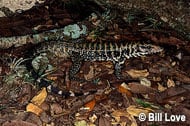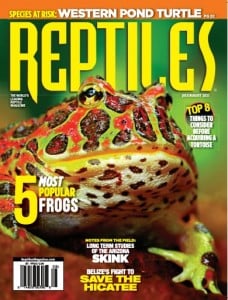Black and White Tegu
Southern South America
These powerful, terrestrial predators shelter in burrows after being active by day. The black and white tegu, or Argentine tegu, emerges with the warming sun and actively prowls its territory in search of any small animals that it’s capable of catching and devouring. Prey is subdued in the black and white tegu’s powerful jaws until all struggling ceases. Large food items are ripped apart with the aid of sharp claws; smaller items are swallowed whole.
In captivity, domestic rodents can provide the bulk of the black and white tegu’s diet. Raw eggs, chicks, or other small animals can supplement the diet. Keep your fingers clear when offering food because black and white tegus often display a voracious feeding response to anything that moves. Aside from feeding time, black and white tegus often tame down well and may make docile pets.
A spacious cage or outdoor pen will allow for black and white tegus to dig with their strong claws. Black and white tegus typically retire to their burrows for many months each season when temperatures dip below the low 70s Fahrenheit, whether you want them to or not. Black and white tegus may remain completely dormant, refusing food, and often stay hidden the whole time.
Females deposit 12 to 30 eggs, which they guard jealously. Hatchlings are finger-thick and 7 to 10 inches in length. Black and white tegus often sport brilliant green coloration which gradually fades to tones of black and white as they mature over several years.

